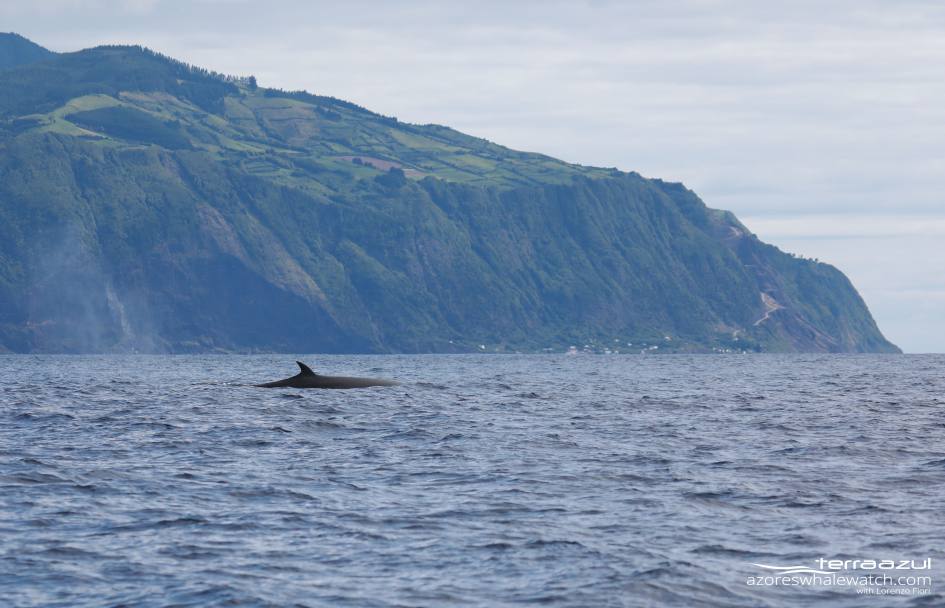
Sei Whale (Balaenoptera borealis) spotted this morning travelling through Azorean waters.
Hello ocean lovers,
Today we had some wonderful tours with sightings of 5 cetacean species!
In the morning we started with a beautiful encounter of an adult Sei Whale (Balaenoptera borealis).
This baleen whale can reach a maximum lenght of 20 meters but is more typically about 15 meters long. Together with Fin Whales and Minke Whales, Sei Whales are the fastest great whales. They can swim at a speed of 50 km/h for short distances. The individual from this morning was also travelling fast (about 30 km/h). We could follow the whale easy because it was leaving an evident track of patches of calm water on the surface of the ocean, also known as flukeprints.
Flukeprints are vortexes generated by ample vertical movements of the tail that whales use to propel through the water.
After this we spotted a massive bull Sperm Whale (Physeter macrocephalus). By inspecting the photographs of the fluke we could determine it wasn’t the bull that is most sighted in São Miguel waters. Most likely we are dealing with a transient solitary bull.
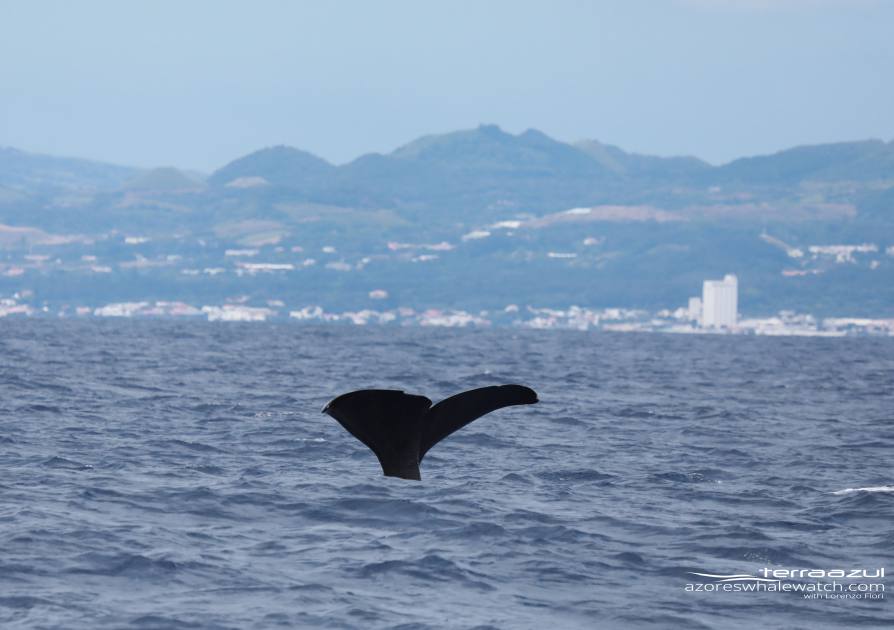
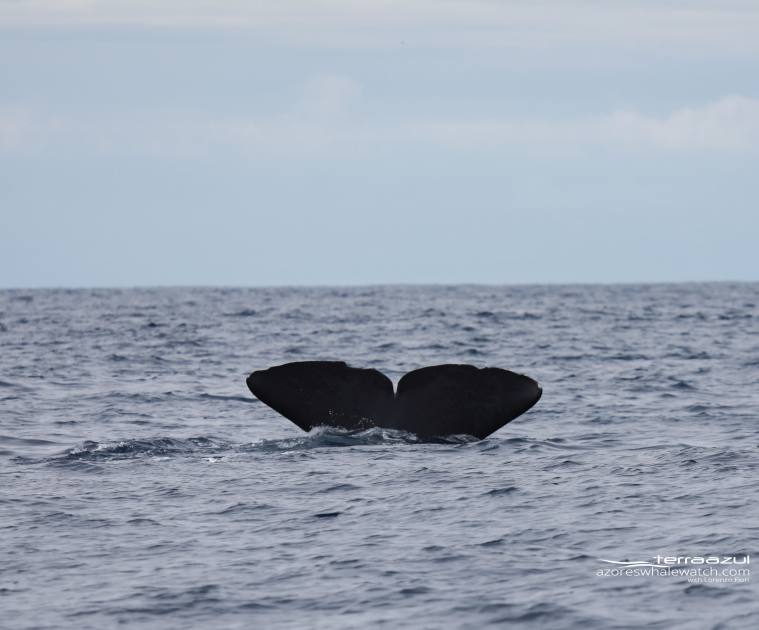
Sperm Whale (Physeter macrocephalus) fluke from today (afternoon up, morning down).
Later on we also spotted two of our resident dolphin species, the Bottlenose Dolphin (Tursiops truncatus) and the Common Dolphin (Delphinis delphis).
In the afternoon we first encountered the same Sperm Whale of the morning. After this we had a resting group of Bottlenose Dolphins. To end the lovely afternoon we came across a huge group of Striped Dolphins (Stenella coeruleoalba). They were at least 250 individuals, jumping or almost flying over the ocean.
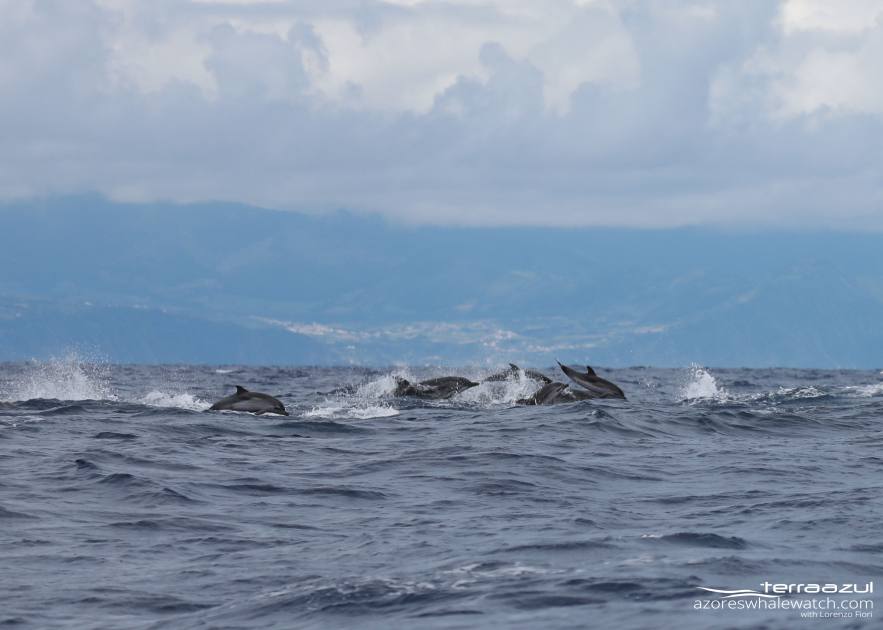
Striped Dolphins (Stenella coeruleoalba), several calves are visible porpoising out of the water.












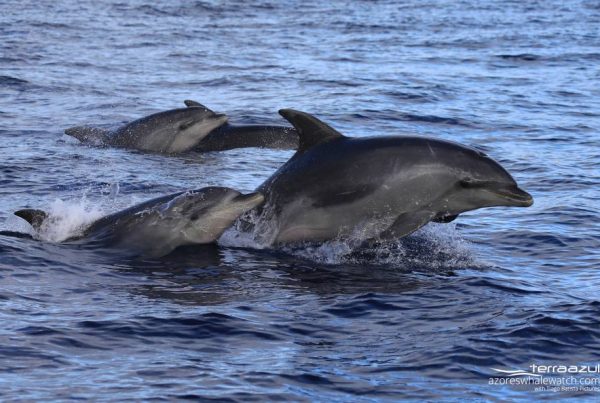
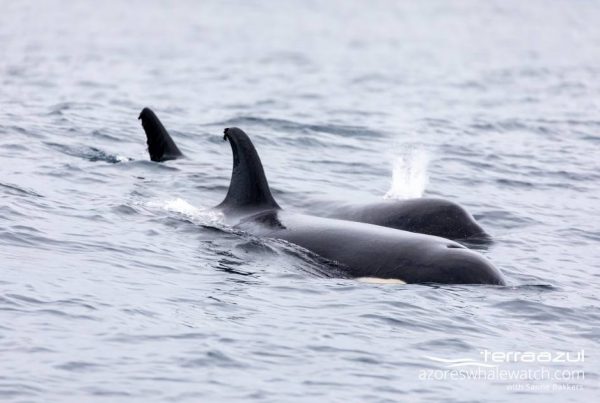
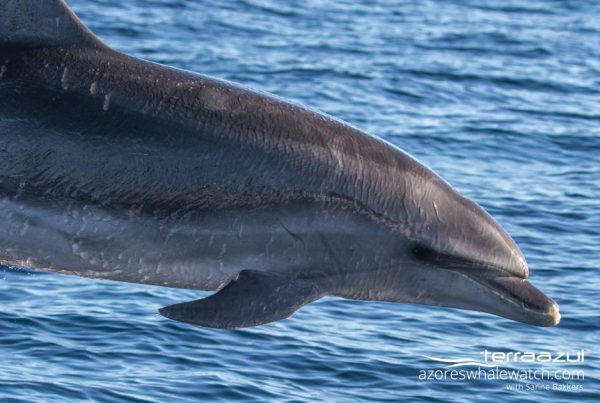



Your thoughts on this?